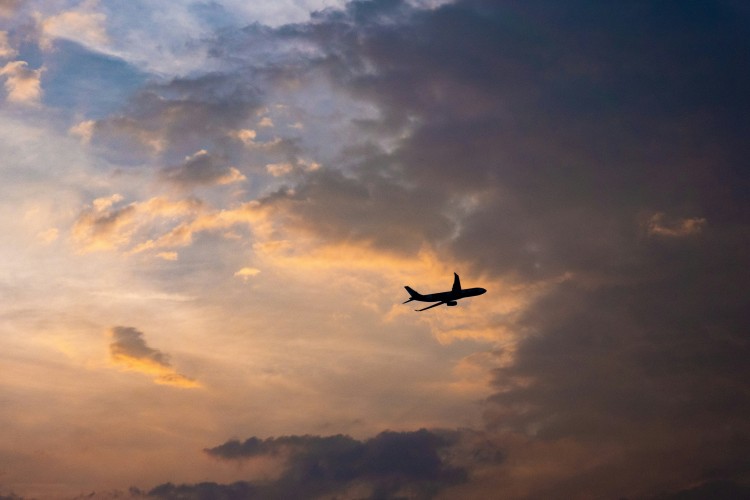State of Indian aviation industry: Tata Group-owned Vistara is experiencing turbulent times, leading to numerous flight cancellations and delays. The full-service airline’s announcement of a new pay structure, ahead of its merger with Air India, sparked objections and rejections from some pilots, indicating significant dissatisfaction. Amidst efforts to consolidate its four airlines, Tata Group has seen Vistara cancel nearly 1,000 flights in April as it addresses the ongoing pilot rebellion.
Many pilots have refused to work, forcing the airline to scale back operations by approximately 25-30 flights daily, which is nearly 10% of its capacity. The issue of crew unavailability is not new, with daily cancellations starting in mid-February following the announcement that Air India’s pilot pay structure would be adopted by Vistara. This new salary structure represents a significant reduction, with cuts ranging from Rs 80,000 to Rs 1.4 lakh from a salary of Rs 3.4 lakh. Voluntary cancellations are expected to persist until the end of April.
READ | ETCD guidelines: RBI seeks to balance rupee stability, competitiveness
India’s aviation sector is witnessing a wave of mergers and acquisitions as airlines consolidate to achieve greater economies of scale and market share. The merger between Air India and Vistara under the Tata Group is a prime example of this trend. The consolidation has the potential to reshape the industry, with larger airlines wielding more influence over pricing and flight routes. However, the long-term impact on operational efficiency, service quality, and passenger choice remains to be seen.
Technological advancements are playing an increasingly important role in propelling India’s aviation sector forward. Airlines are embracing digital solutions to streamline operations, enhance passenger experience, and improve efficiency. These solutions include online booking platforms, mobile applications for check-in and baggage management, and sophisticated air traffic control systems. Furthermore, the adoption of automation technologies and exploration of sustainable aviation fuels hold promise for the future of Indian aviation, fostering a more efficient and environmentally conscious industry.
The discontent among Vistara’s pilots has significantly disrupted the airline’s operations. The refusal of pilots to work has not only led to a sharp increase in flight cancellations but also put pressure on the airline’s ability to maintain its schedule and service standards. This unrest has forced Vistara to undertake strategic decisions like scaling back its operations and re-evaluating its workforce management, which could have long-term implications on its market reputation and operational efficiency.
Booming aviation industry
Contrasting with Vistara’s challenges, India’s aviation sector is booming, marked by new airports, an influx of aircraft, and a growing passenger base. Despite these advancements, the industry faces disruptions, higher fares, and increased fuel prices. A report by The Economist in November 2023 highlighted the rapid development of Mumbai’s new airport, reflecting the broader growth in India’s aviation industry. In 2023 alone, India inaugurated four airports and four terminals, doubling the number of operational civil airports in a decade.
While India’s aviation sector boasts rapid growth with new airports and increased fleet sizes, it simultaneously grapples with operational and financial challenges. The stark contrast between the burgeoning infrastructure and the sector’s internal strife highlights the complexity of the aviation industry in India. This juxtaposition underscores the need for a balanced approach to managing expansive growth while addressing the underlying issues that threaten the stability and sustainability of airline operations.
The government’s ambitious infrastructure plan includes nine additional airports, with more in development. New Delhi and Mumbai are expected to see new airports, reinforcing India’s position as a major aviation market. Despite the optimistic outlook, with passenger numbers projected to exceed 500 million by 2030, the industry confronts persistent challenges such as safety concerns, pilot shortages, and weak regulatory oversight. The collapse of several carriers highlights the sector’s vulnerability to financial strain and operational costs.
The demise of airlines like Go First, Kingfisher, and Jet Airways sheds light on the harsh realities of the aviation industry in India. These failures can be attributed to a variety of factors, including financial mismanagement, unsustainable debt levels, and intense competition. These examples underscore the precarious nature of the aviation business, where even established players can falter without prudent financial and operational strategies.
Concerns are growing over a potential duopoly in India’s domestic aviation market, dominated by IndiGo and Tata group airlines, which could exacerbate fare increases and travel difficulties. Additionally, geopolitical tensions are driving up Aircraft Turbine Fuel (ATF) prices, which constitute a significant portion of operational costs. The government recognises these challenges and the need for long-term policy reforms to support the airline industry’s growth. Addressing the complex regulatory environment, professional shortages, and high training costs is essential for the sector’s sustainability.
To foster a thriving aviation sector, the government must enact targeted policy measures. These could include tax relief for airlines, subsidies to offset rising fuel costs, and investment in training programs to alleviate the pilot shortage. Such initiatives would not only aid in stabilising the industry but also ensure its long-term growth and competitiveness on a global scale.

